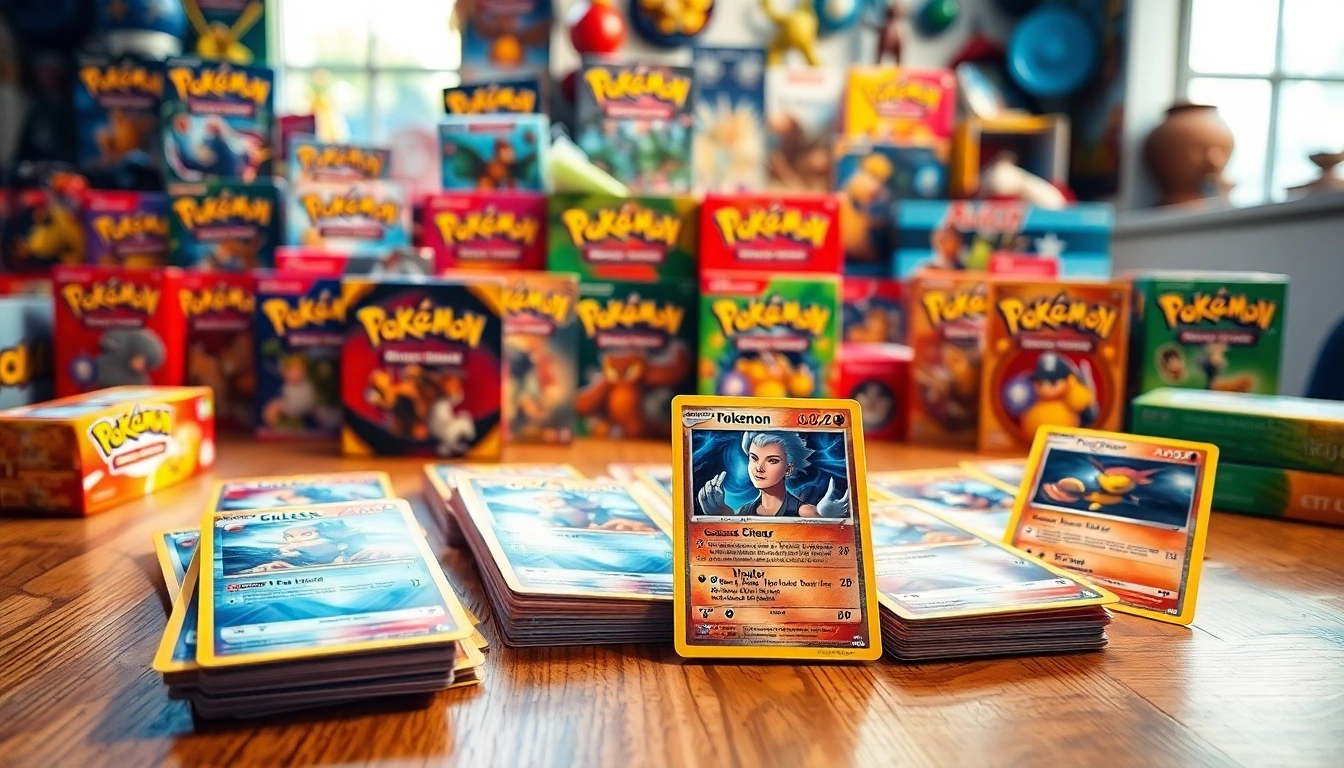Understanding Real Pokémon Cards
The world of Pokémon trading cards is not only a nostalgic trip for fans but also a lucrative venture for collectors. With the increasing interest in the Pokémon Trading Card Game (TCG), the demand for genuine and real Pokémon cards has surged. In this guide, we will delve into what constitutes authenticity in Pokémon cards, how to distinguish between real and fake cards, and the significance of authenticity in building a valuable collection.
What Makes Pokémon Cards Authentic?
Authentic Pokémon cards are not just pieces of printed paper; they represent a blend of art, rarity, and value. Several features contribute to their authenticity:
- Official Markings: Genuine Pokémon cards come with specific prints and logos, notably the Pokémon Company logo, which should be present on every card.
- Material Quality: Real Pokémon cards are made from quality card stock that gives a particular texture and weight. If the card feels flimsy or too thin, it’s likely a counterfeit.
- Printing Quality: Examining the print quality can provide clues about authenticity. Authentic cards have sharp, vibrant colors, while fakes often show signs of blurriness or faded colors.
- Holographic Features: Many rare cards feature holographic images that are intricate and multi-dimensional; counterfeit versions usually do not replicate this effect accurately.
Differentiating Fake from Real Pokémon Cards
As the market for Pokémon cards flourishes, fakes have become increasingly sophisticated. Here are essential strategies for distinguishing real from fake cards:
- Light Test: Hold the card up to a bright light; real Pokémon cards have a particular opacity that allows some light to pass through. Counterfeits often appear more translucent.
- Black Light Test: Under UV light, authentic Pokémon cards generally fluoresce, while the fake ones may not react or exhibit unusual colors.
- Tactile Inspection: The texture of authentic cards is consistent; if the card feels too smooth or rough, it could be a fake.
- Weight Check: If you have a similar authentic card for comparison, weighing can provide clues. Real cards have a standard weight that can be measured against suspicious cards.
Importance of Authenticity in Collecting
Authenticity is paramount in the realm of Pokémon cards for several reasons:
- Investment Value: Genuine cards tend to appreciate over time, while fakes can severely depreciate your collection’s value.
- Collectibility: The Pokémon community highly values authenticity. Collectors prefer cards that are verified as real, which enhances their desirability.
- Personal Satisfaction: Knowing that your collection comprises genuine items fosters a sense of pride and enhances the overall experience of collecting.
Where to Find Real Pokémon Cards
Finding real Pokémon cards can be challenging, especially with so many counterfeit products in circulation. However, several reliable sources can help you secure authentic cards.
Top Online Retailers for Genuine Pokémon Cards
Online platforms offer one of the most convenient ways to purchase Pokémon cards. Here are some reputable sites:
- Pokémon Center: The official site offers a wide array of cards, accessories, and collectibles to ensure quality.
- TCGPlayer: A trusted marketplace that allows users to buy and sell Pokémon cards, with authenticity guarantees from sellers.
- Amazon: With a variety of sellers, you can find genuine Pokémon cards, but it’s crucial to check seller ratings and reviews.
- eBay: While eBay can provide excellent deals, it’s imperative to verify sellers and compare card features against known authentic cases.
Local Game Stores and Collectible Shops
Visiting local game stores is an excellent way to find real Pokémon cards. Not only can you physically inspect the cards, but you can also receive knowledgeable advice from staff. Additionally, local collectible shops often specialize in trading cards, providing another trustworthy avenue to pursue genuine cards. Here are some benefits of shopping locally:
- Expert Advice: Employees can provide insights on card authenticity and value.
- Community Engagement: Local stores often host trading events where you can connect with fellow collectors.
- Instant Gratification: You won’t have to wait for shipping; you’ll get your cards immediately.
Potential Risks When Buying Online
While online shopping offers convenience, several risks come with it:
- Counterfeit Risk: Many sellers may unintentionally list counterfeit cards.
- Hidden Fees: Be wary of hidden shipping and handling fees that can inflate costs unexpectedly.
- Return Policies: Ensure you understand return policies before purchasing, as some sellers may not accept returns for non-authentic items.
Real Pokémon Cards Pricing Guide
Understanding pricing is essential for both buyers and sellers in the Pokémon card market. Several factors influence prices, which can fluctuate based on demand and rarity.
Factors Influencing the Value of Pokémon Cards
Various factors can affect the pricing of Pokémon cards:
- Rarity: Cards that are produced in limited quantities are naturally more valuable. For instance, holo or shiny cards typically fetch higher prices due to their scarcity.
- Condition: The card’s condition, graded from “Mint” to “Poor,” significantly impacts its value. Cards in pristine condition will command higher prices.
- Popularity of the Pokémon: More popular Pokémon, such as Charizard, often retain a higher value compared to less-known characters.
Understanding Market Trends
Market fluctuations are common in the Pokémon card industry, influenced by various external factors including:
- New Releases: The launch of new sets can drive interest in older cards, raising their market value.
- Celebrity Influence: When celebrities like Logan Paul engage in Pokémon card collecting, it can lead to sudden increases in prices for certain cards.
- Community Events: Collectors’ conventions and tournaments can revitalize interest in specific cards, affecting their market value.
How to Assess Condition and Rarity
A thorough understanding of card condition and rarity is paramount for collectors. Here’s how to assess them:
- Grading Systems: Familiarize yourself with grading systems employed by PSA and Beckett. They assign scores based on card condition.
- Online Databases: Utilize resources like TCGPlayer or the Pokémon TCG card database to check current prices for specific cards based on their condition.
- Comparison: Compare your cards against known standards in terms of wear, print quality, and rarity before finalizing a purchase.
Tips for Collectors of Real Pokémon Cards
Becoming a successful collector requires dedication, knowledge, and strategy. Here are some practical tips to enhance your Pokémon card collecting experience:
Building and Maintaining Your Collection
Creating a valuable collection involves thoughtful planning:
- Diversification: Don’t focus solely on a specific type or series; diversify your collection to include various generations and styles.
- Documentation: Keep track of your cards, including their condition, purchase price, and any future sales. This organized approach helps manage and evaluate your collection.
- Regular Updates: Stay updated with current trends, market prices, and community news to make informed decisions about your collection.
Resources for Learning About Pokémon Cards
Enhance your knowledge through various resources:
- Books and Guides: Numerous publications detail the history and value of Pokémon cards, which can be excellent references.
- YouTube Channels: Channels dedicated to Pokémon collecting provide insights on market trends and spotting fakes through tutorials.
- Social Media Groups: Join online forums and social media groups to engage with fellow collectors and learn from their experiences.
Community Engagement and Trading Options
Engaging with the Pokémon community can bring numerous benefits:
- Trading Events: Attend local trading events to swap duplicates or cards you no longer need. This helps expand your collection without spending additional funds.
- Online Communities: Participate in online marketplaces and forums, where you can discuss strategies, trade cards, and gain insights.
- Networking: Build relationships with other collectors, which may open doors to exclusive trades and private sales.
Protecting Your Real Pokémon Cards
Once you have built your collection, it is crucial to protect your investment. Proper care and preservation techniques can maintain the integrity of your cards for years.
Best Storage Practices for Card Preservation
To preserve the condition of your Pokémon cards:
- Store in Binders: Use binders with clear plastic sleeves that fit snugly, preventing movement while allowing you to view cards easily.
- Avoid Direct Sunlight: Store cards away from direct sunlight to prevent fading and deterioration of colors over time.
- Temperature Control: Keep cards in a climate-controlled environment, avoiding humidity and extreme temperatures that could warp or damage the cards.
Utilizing Protective Gear and Accessories
Use protective gear to enhance the longevity of your Pokémon cards:
- Toploaders: Rigid toploaders can provide an extra layer of protection, especially for valuable cards.
- Card Sleeves: Employ sleeves to prevent scratches and fingerprints during handling.
- Display Cases: Consider using display cases for particularly rare or valuable cards to keep them safe while still showcasing them.
Insurance and Appraisal for Valuable Cards
If you own significantly valuable cards, consider having them appraised and insured:
- Professional Appraisal: Get your high-value cards appraised to determine their market value accurately.
- Insurance Policies: Check whether your home insurance covers collectibles, or consider specialized insurance for higher security.
- Documentation: Maintain documentation of card purchase prices and appraisals to streamline any insurance claims if needed.



